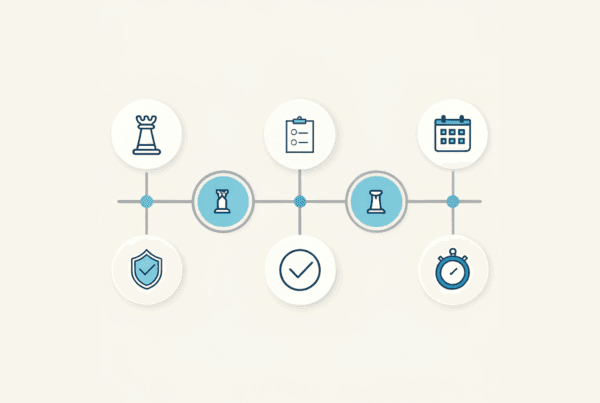Selling your wound care practice is a significant decision. You have built a valuable asset that serves a critical patient need in San Diego. The current market presents a strong opportunity, but realizing your practice’s full value requires careful preparation and a clear understanding of the process. This guide provides insights into the key factors that will define your sale, from market timing to post-sale planning.
Market Overview: A Strong Climate for Wound Care in San Diego
The market for wound care services is not just stable; it is growing. This trend creates a favorable environment for practice owners considering a sale. Nationally, the demand is clear, but the opportunity in San Diego is particularly strong.
A Growing National Trend
The global wound care market is on a clear upward trajectory, projected to grow from $23.13 billion in 2024 to over $32.75 billion by 2033. This reflects an increasing patient need driven by an aging population and a higher prevalence of chronic conditions. For practice owners, this large-scale growth signals sustained interest from a wide range of buyers, from health systems to private equity groups, who are looking to invest in profitable specialties.
The San Diego Advantage
San Diego is a mature and receptive healthcare market. The presence of major health systems like UC San Diego Health and Scripps Health, all with dedicated wound care centers, confirms an established demand and referral base. This existing infrastructure means buyers see San Diego not as an unproven territory, but as a region with a built-in patient population ready to support a thriving independent practice.
Key Considerations for San Diego Owners
A healthy market is a great starting point, but a buyers final decision rests on the specifics of your practice. Before you begin the sale process, it is important to assess your operational readiness. Buyers will scrutinize your EMR systems, billing practices, and the efficiency of your patient management. They want to see a business that runs smoothly. Equally important is the regulatory landscape. Californias Knox-Keene Act, which governs managed care plans, affects practice structure and operations. Navigating these details is not just administrative work; it is a core part of positioning your practice to attract premium offers and ensure a smooth transfer of ownership.
What Buyers Are Looking For Right Now
While specific transaction details are private, we know that specialty medical practices in California often sell for 0.8 to over 1.0 times their annual revenue. To position your wound care practice at the higher end of that range, it helps to think like a buyer. Sophisticated buyers today are focused on a few key areas:
- Provable Profitability. Buyers look past simple revenue. They want to see clean financial records that clearly demonstrate consistent profitability, often measured by Adjusted EBITDA. This means having your financial house in order is the first step.
- A Clear Growth Story. What is the future potential? Buyers pay a premium for opportunity. This could be the chance to add new services like hyperbaric oxygen therapy, expand telehealth, or build new referral partnerships with local skilled nursing facilities.
- Operational Maturity. A practice that relies entirely on the owner is seen as a risk. Buyers value a practice with an experienced team, efficient workflows, and a stable, diverse base of referring physicians.
The Sale Process: A Path to the Closing Table
The journey of selling your practice follows a structured path designed to protect all parties. It typically begins with a potential buyer signing a confidentiality agreement (NDA). This allows you to share detailed financial and operational information without risking public disclosure. Following this is the due diligence phase. This is the most intensive part of the process, where the buyer verifies everything about your practice, from financial statements to employee contracts. Many deals encounter challenges here if the practice is not properly prepared. An organized and transparent approach during due diligence builds trust and keeps the process moving toward a successful negotiation and closing.
How Your Wound Care Practice is Valued
Understanding your practice’s value is the foundation of a successful sale. It is more than a simple revenue multiple. The most credible valuations are based on your practice’s Adjusted EBITDA (Earnings Before Interest, Taxes, Depreciation, and Amortization). This figure normalizes your net income by adding back owner-specific and one-time expenses to show the true cash flow available to a new owner.
From there, a valuation multiple is applied. This multiple is influenced by several factors unique to your practice. As one owner I worked with realized, buyers don’t just buy your past performance; they buy your future potential.
| Key Valuation Driver | Impact on Final Sale Price |
|---|---|
| Adjusted EBITDA | This is the core metric. A higher, well-documented EBITDA directly increases value. |
| Multi-Provider Team | A practice not solely dependent on the owner is less risky and commands a higher multiple. |
| Documented Growth Plan | Showing clear avenues for growth, like new services or marketing, justifies a premium. |
| Payer Mix Diversity | A healthy mix of payers, including Medicare and private insurance, indicates stability. |
Planning for Life After the Sale
The moment you sign the closing documents is a milestone, but it is not the end of the story. Your transition plan is a critical part of the deal structure itself. You need to consider what your transition role will be. Will you stay on for six months to ensure a smooth handover, or is a clean break your goal? Protecting your legacy also means ensuring staff retention. Buyers see immense value in an experienced and loyal team, and a plan to keep them engaged is a major selling point. Finally, thinking about tax efficiency from the start is important. The structure of your sale can significantly impact your net proceeds. Planning for these post-sale elements ahead of time ensures your exit is as professionally and personally rewarding as possible.
Frequently Asked Questions
What is the current market outlook for selling a wound care practice in San Diego?
The market for wound care services in San Diego is strong and growing, supported by major health systems with dedicated wound care centers. The demand is driven by an aging population and increasing chronic conditions, making it a favorable time to sell.
How is a wound care practice typically valued in San Diego?
Wound care practices are often valued based on Adjusted EBITDA, with sale prices typically ranging from 0.8 to over 1.0 times annual revenue. Buyers consider profitability, growth potential, operational maturity, and payer mix diversity when determining value.
What operational factors do buyers focus on when purchasing a wound care practice?
Buyers look for smooth operation which includes efficient EMR systems, billing practices, patient management, and compliance with regulations like California’s Knox-Keene Act. A practice with a multi-provider team and minimal owner dependence is preferred.
What are important steps in the sale process of a wound care practice?
The sale process usually starts with a confidentiality agreement, followed by due diligence where the buyer examines financials and operations thoroughly. Organizing information and transparency during this phase are key to progressing toward a successful sale.
What considerations should I have for life after selling my wound care practice?
Post-sale planning is crucial. Decide on your transition role, whether to stay for a smooth handover or make a clean break. Ensure staff retention plans to maintain practice value and plan for tax efficiency to maximize your financial outcome.



